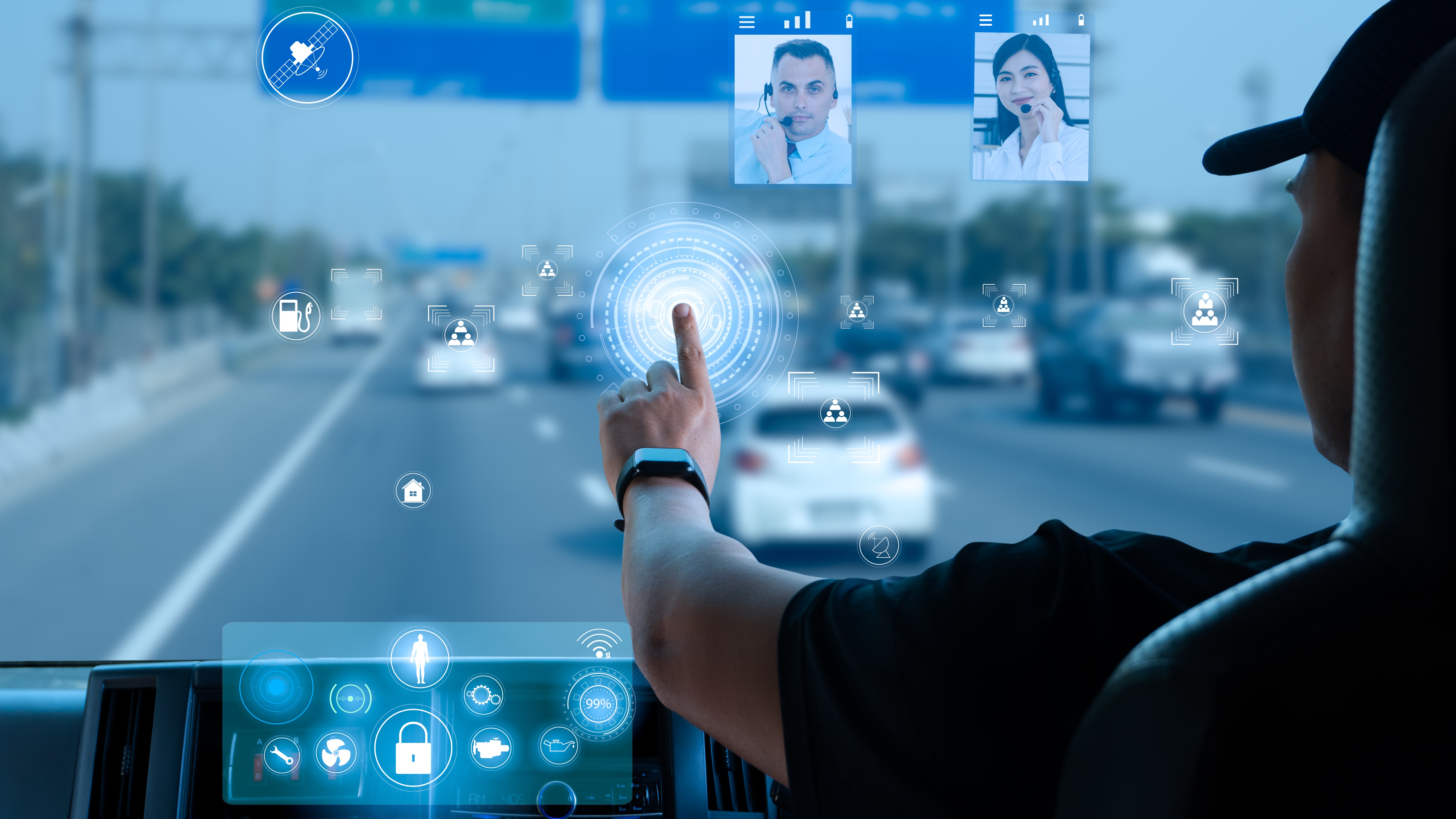Dashboards Go Digital: Innovations in Digital Cockpits

Touchscreen displays, artificial intelligence, and augmented reality are revolutionizing the in-car experience for both drivers and passengers. Let’s take a look at the latest innovations in digital cockpits.
“The only instrumentation included on the dash of the Ford Model T was an ammeter, which measures electrical currents running through a circuit,” writes Tibi Puiu of ZME Science. “If you wanted a speedometer, you had to pitch a couple of extra bucks. If you wanted to gauge the fuel level, you just had to dip a stick into the tank and check how wet it got. As basic as it gets.”
Car dashboards have come a long way since then. They now give drivers more information to help them make better decisions and improve their driving experience. Dashboards have evolved from single-purpose analog gauges to multipurpose, multi-screen displays--the digital cockpit.
What is a digital cockpit?
“Instead of a traditional instrument cluster on your car’s dashboard, a digital cockpit uses multiple screens, digital assistants, and different means of input,” says Thibaut de Vaureix, Business Unit Head for IMI Mobility.
Moving away from analog pointers and simple dials, a digital cockpit displays gauges and controls for the vehicle’s operation, as well as infotainment such as music, maps, and climate control. It also controls and displays advanced driver-assist functions, making vehicles safer for drivers, passengers, and pedestrians.
In a world where the smartphone is ubiquitous, touchscreens are a logical progression in the evolution of a vehicle’s dashboard, enabling users to scroll through different menus on a single interface. Transforming windshields into digital displays, head-up displays (HUD) improve driver safety by projecting key driving information in front of the driver’s line of sight.
Let’s take a look at some recent innovations in digital cockpits by technology companies and automobile manufacturers.
Volkswagen ID. Cockpit and Touchscreen
ID. stands for intelligent design, identity, and visionary technologies. Take a look at the digital cockpit and touchscreen in the Volkswagen ID.3, a compact electric vehicle (EV) with two screens: one for entertainment and one for vehicle systems.
 The German auto manufacturer has also introduced augmented reality head-up displays into its ID.3 and ID.4 electric vehicles. Radar, cameras, and GPS scan the road in front of the car and then project information onto the windshield.
The German auto manufacturer has also introduced augmented reality head-up displays into its ID.3 and ID.4 electric vehicles. Radar, cameras, and GPS scan the road in front of the car and then project information onto the windshield.
Watch the technology in action in this video.
 Mercedes Benz MBUX Hyperscreen
Mercedes Benz MBUX Hyperscreen
Curving across the dashboard, the MBUX Hyperscreen is a 56-inch-long screen unit made up of three screens: a 12.3-inch digital gauge cluster, a 17.7-inch infotainment screen, and a 12.3-inch screen for the front passenger.
As if the size wasn’t enough to wow you, they’ve thrown serious computing power and AI into the mix.
The MBUX Hyperscreen will debut with the EQS, the company’s first all-electric luxury vehicle from Mercedes-EQ.
Samsung Digital Cockpit 2021
Samsung created the Digital Cockpit 2021 to answer the question, “How far can we take vehicle technology?” As it turns out, the answer is to the point where a car is transformed “from transportation to a daily living and life space”.
The Digital Cockpit 2021 comes with a plethora of features, including a 49-inch QLED Display, 360 Vision Monitoring System, 5G technology, and Automotive Samsung Health. These technologies can transform your vehicle into a mobile office and entertainment hub--all without sacrificing driver and road safety.
Mainstream technology by 2030
Anyone who was obsessed about KITT from Knight Rider or Ironman’s Jarvis can see that fiction is becoming fact: cars are becoming increasingly high-tech, and by 2030, digital cockpits may soon be the norm.
In its application analysis report entitled New Automotive Infotainment Architectures, global tech advisory firm ABI Research discusses market trends, architecture implications, and forecasts for next-generation vehicle infotainment.
Here are some key figures from the report.
“The next-generation onboard automotive computing architecture will be based on an integrated and interconnected network of processors designed to provide fail-safe support for one another. Moreover, vehicles will be more connected and have more integrated ADAS content into the digital cockpit,” Maite Bezerra, Smart Mobility & Automotive Research Analyst at ABI Research, said in a press release.
With its acquisition of VIA Optronics, a leading optical bonding and display solutions provider, IMI has the expertise and experience to offer advanced automotive display applications to both tech and automotive companies.
At IMI, we have always harnessed technology to improve the way we live. Advancements in digital cockpits enable safer roads and more enjoyable journeys for all.
As one of the Top 21 EMS companies in the world, IMI has over 40 years of experience in providing electronics manufacturing and technology solutions.
We are ready to support your business on a global scale.
Our proven technical expertise, worldwide reach, and vast experience in high-growth and emerging markets make us the ideal global manufacturing solutions partner.
Let's work together to build our future today.





